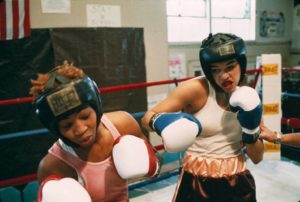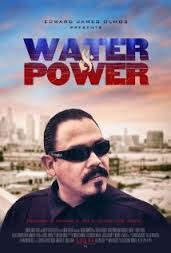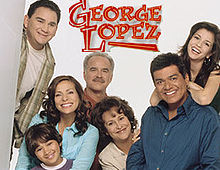Review of Spare Parts
 Spare Parts is a 2015 American drama directed by Sean McNamara and starring George Lopez. The film is based on the true story of four Hispanic high school students who, with the help of their teacher, form a robotics club in order to compete in a national robotics competition. With no experience, $800 dollars, used car parts and dream, this group of students compete against the best colleges in the country and eventually defeat reigning robotics champion, MIT, for the title.
Spare Parts is a 2015 American drama directed by Sean McNamara and starring George Lopez. The film is based on the true story of four Hispanic high school students who, with the help of their teacher, form a robotics club in order to compete in a national robotics competition. With no experience, $800 dollars, used car parts and dream, this group of students compete against the best colleges in the country and eventually defeat reigning robotics champion, MIT, for the title.
What’s interesting about this movie is not just the excitement of the robotics competition, but it’s also about what these boys learned about themselves in the process. This is not your traditional club of overachieving high school students. These four boys are all first generation, undocumented immigrants from Mexico, who were raised in Arizona from a young age. They attend an underfunded public high school where most of the students do not have big dreams or aspirations, and are constantly told how they will not amount to much in life. They’ve all faced adversity in life. Oscar Vazquez is the main student who initiates the robotics project after his dreams of enlisting in the U.S. Army are dashed due to his undocumented status. The fear these students have of being deported is shown throughout the film and it’s something people face daily. Another challenge these boys faced were the lack of money and support from their families. While the other teams competing at the robotics competition were made up of college students who had huge budgets to create their robots, these boys used old car parts and asked for donations to get their robot built. They ended up raising $800 to build their robot and even used a tampon to fix a leak the night before the competition. They overcame adversity and worked together despite not having the advantages the students at these other schools had. There were many times during the film that the boys wanted to give up and quit. One of them faced the challenges of an abusive father and Mr. Cameron stepped in an acted as a father figure to him. These are all challenges many students are facing today.
While watching this film, I found many similarities to Real Women Have Curves. America Ferrera’s character reminded me of Oscar Vazquez in this film. Both are good students who strive to achieve more in life, yet come from impoverished areas with little support from their families. While Oscar’s military dreams were shut down due to his legal status, Ana had the problem of her family needing her to work right after high school. Both students had the help of a teacher who believed in them and both overcame obstacles and proved to be successful. They were able to break the stereotype of the underserved Latino teenager. Unlike in American Me where the new generation of kids grew up to follow in the footsteps of their delinquent older siblings, these students were able to break the cycle and change their futures for the better.
Overall I really enjoyed this film. I felt that it showed a realistic view of immigrant students than what they are stereotyped as. Many believe the stereotypes that Latino immigrants are all criminals who are here to cause trouble and steal American jobs. They forget that there are many first generation students who came here as young children. Many of these students do not even remember being in Mexico. They are just as American as the student sitting next to them. Unfortunately they have to live with this fear of not knowing what will happen to them. After doing some research on the film, it’s interesting to note that Oscar Vazquez continued on to Arizona State University where he founded their robotics club and graduated with an Engineering Degree. Shortly after that he voluntarily deported himself in order to try to gain citizenship by going through the process. When asked if he had ever resided in the U.S. illegally after the age of 18, he answered yes. He was told that because of that he was banned from the U.S. for ten years. Thankfully with the help of a Senator and a few others, he was granted amnesty and allowed to reenter where he then enlisted in the Army and served in Afghanistan. Films like this are very important in helping us to see the other side of immigration issues and see how much it affects families. It’s also important in showing that despite the adversity and disadvantages you face in life, you can overcome the stereotypes and be successful. No one thought this ragtag team of underdogs would be able to accomplish such a feat as beating MIT in a robotics competition. But with the help of their teacher coupled with their motivation and drive, they were able to accomplish something great and become role models for others in their same situations.

Robotics Club with their robot “Stinky”



 Relating the film to our course really isn’t easy for me. Unlike most of the films we have screened I didn’t think this film had the obvious messages. I don’t think this was a mexipliotation even with a pretty much all Latino cast. There was really not a type of White Gaze so I would say points made were hidden if any. I did notice the occasional music or the jokes relayed in Spanish but it’s about Latino women so that was good to me for the connection. There was rebellion against the Spanish culture no quenicera or the modern American views on marriage but those point could have been made by any also the adjustment to living in a moden day America. Honestly I feel that the film was made by a Latino woman for Latino people. The story was relatable for some entertainment for others and just a story. I don’t think that it would be different for black or white women but as I stated the Spanish humor stood out. Overall I would say a good Mother’s Day film or maybe teen flick. Not bad, yet not giving the title of awesome. The balance of humor in a drama was done well. The cast I will say were pretty good and that always matters.
Relating the film to our course really isn’t easy for me. Unlike most of the films we have screened I didn’t think this film had the obvious messages. I don’t think this was a mexipliotation even with a pretty much all Latino cast. There was really not a type of White Gaze so I would say points made were hidden if any. I did notice the occasional music or the jokes relayed in Spanish but it’s about Latino women so that was good to me for the connection. There was rebellion against the Spanish culture no quenicera or the modern American views on marriage but those point could have been made by any also the adjustment to living in a moden day America. Honestly I feel that the film was made by a Latino woman for Latino people. The story was relatable for some entertainment for others and just a story. I don’t think that it would be different for black or white women but as I stated the Spanish humor stood out. Overall I would say a good Mother’s Day film or maybe teen flick. Not bad, yet not giving the title of awesome. The balance of humor in a drama was done well. The cast I will say were pretty good and that always matters.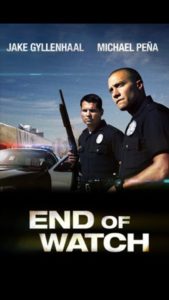



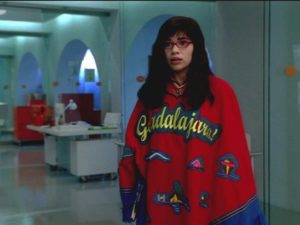

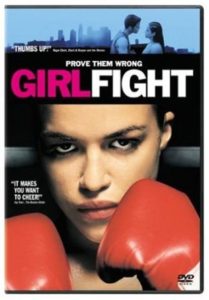 This film, Girlfight is about a young woman’s struggle to fit in the mold of what society a woman should be in Brooklyn, New York. It is written and directed by
This film, Girlfight is about a young woman’s struggle to fit in the mold of what society a woman should be in Brooklyn, New York. It is written and directed by 